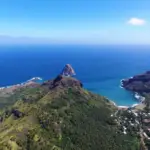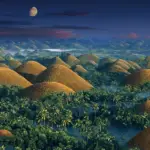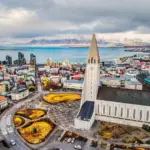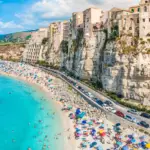Introducing the Pantanal Mato Grosso do Sul: A Rich and Diverse Ecosystem

The Pantanal of Mato Grosso do Sul The Pantanal is a region of stunning beauty and exuberant biodiversity, considered one of the richest and most diverse ecosystems in the world. Located in the heart of South America, it primarily covers the Brazilian state of Mato Grosso do Sul, but also extends into parts of neighboring states such as Mato Grosso, Bolivia, and Paraguay. With its vast expanse, estimated at over 140,000 square kilometers, the Pantanal is a true natural wonder that attracts the attention of scientists, conservationists, and nature lovers.
For centuries, the Pantanal has been inhabited by indigenous peoples who recognize its cultural importance and value its natural wealth. Its unique biodiversity is a direct result of the combination of diverse ecosystems, including floodplains seasonally flooded by the Paraguay and Paraná rivers.
Although widely known for its floodplains and abundant wildlife, the Pantanal is also home to an impressive variety of other natural habitats, such as wooded savannas, tropical forests, and cerrado. This diversity provides ideal conditions for a wide range of plant and animal species to thrive harmoniously.
Overview of the Geographic Location and Extent of the Pantanal in Mato Grosso do Sul
The Pantanal Forest Grosso do Sul is located in the central-western region of Brazil, covering approximately 65% of the state of Mato Grosso do Sul. It is bordered to the north by the Amazon, to the west by the Bolivian and Paraguayan Chaco, and to the east by the Cerrado. The region is characterized by its flat topography, crisscrossed by a dense network of rivers, lakes, and canals.
The Paraguay and Paraná rivers are primarily responsible for draining the waters that flood the vast plains during the rainy season. During the dry season, these flooded areas recede, allowing various life forms to adapt to seasonal conditions.
The region's geographic and climatic diversity contributes to a surprising variety of natural habitats in the Pantanal of Mato Grosso do Sul. These unique ecosystems are home to numerous plant and animal species that have adapted to the extreme flooding conditions experienced part of the year.

The Pantanal biome
The Pantanal biome is an important ecosystem present in various parts of Brazil, Paraguay, and Bolivia. In Brazil, the Pantanal is located in the states of Mato Grosso and Mato Grosso do Sul, and encompasses 22 Brazilian cities. The Pantanal is an important center of biodiversity and is home to a wide variety of plants and animals, including alligators, anacondas, capybaras, jaguars, and many bird species. The Pantanal is also a major tourist destination, attracting visitors from around the world for its beautiful landscapes, rich fauna and flora, and diverse recreational activities, such as fishing, birdwatching, and boating.
The Pantanal is a fragile ecosystem threatened by a number of factors, including environmental degradation, illegal hunting and fishing, and agricultural development. It is important to protect the Pantanal so that future generations can enjoy its many benefits.
The unique topography of the Pantanal
The Pantanal in Mato Grosso do Sul boasts a unique topography that sets it apart from any other ecosystem in the world. Its vast floodplains stretch for kilometers, forming a veritable inland sea.
This characteristic is a result of the influence of rivers such as the Paraguay, Taquari, and Miranda, which meander through the region in sinuous paths. These rivers feed the interconnected lagoons found in the Pantanal, creating a complex and fascinating hydrological system.
The floodplains are covered in diverse vegetation, including grasses, shrubs, and trees characteristic of the region. Elevated areas called ridges can be found, where the vegetation becomes denser and is home to species adapted to drier terrain.
The Pantanal's gentle terrain affords stunning panoramic views, where the water reflects the blue sky on clear days or creates a spectacle of colors at sunset. The vastness of the plains creates an incomparable sense of peace and tranquility.
The influence of dry and rainy seasons on the hydrological cycle of the Pantanal
The dry and rainy seasons play a fundamental role in the dynamics of the hydrological cycle of the Pantanal in Mato Grosso do Sul. During the autumn and winter months, the dry season, the waters begin to slowly recede, exposing vast areas of dry land.
During this period, the region's animals concentrate on the banks of the remaining rivers and lakes in search of more concentrated water resources. With the arrival of spring and summer, the rainy season begins.
Torrential rains feed rivers and lakes, filling the floodplains again. Vegetation reemerges in full force, providing a fertile environment for various species that depend on the abundant waters to survive.
It's interesting to note that the Pantanal in Mato Grosso do Sul is a complex system of wetlands that adapts to seasonal climate variations. This alternation between dry and rainy seasons is essential for maintaining a harmonious environmental balance in the Pantanal.
what to do in the Pantanal of Mato Grosso do Sul
The Pantanal of Mato Grosso do South is a destination known for its biodiversity and natural landscapes. Below are some suggested activities and places to visit:
- Boat and canoe trips: One of the best ways to explore the Pantanal is by boat or canoeing along the region's rivers and lakes. These tours allow visitors to observe local fauna and flora, including alligators, capybaras, birds, and more.
- Safaris: Another popular option is to go on safaris in 4x4 vehicles or on horseback. These tours allow visitors to see wild animals in their natural habitat, including jaguars, tapirs, and anteaters.
- Trails: The Pantanal also offers several hiking trails, allowing visitors to experience nature up close. Some popular trails include the Morro do Azeite Trail and the Tamanduá Trail.
- Pantanal Park Road: The Pantanal Park Road is a scenic highway that traverses one of the most beautiful regions of the Southern Pantanal. Visitors can travel the road by car or by truck and observe animals such as alligators, capybaras, deer, anacondas, and various birds.4.
- Miraculous Water Lagoon: Lagoa da Água Milagrosa is a popular tourist attraction in the Pantanal. The lagoon is known for its crystal-clear waters and the belief that its waters have healing properties.
- Caiman Ecological Refuge: Caiman Ecological Refuge is a 53,000-hectare private reserve in the Pantanal. The site offers a variety of activities, including safaris, boat tours, hiking, and birdwatching.
- Christ the King of the Pantanal: Christ the King of the Pantanal is a statue of Jesus Christ located in Corumbá, one of the main cities in the Pantanal. The statue stands 33 meters tall and offers panoramic views of the region.
- Farm hotels and boat hotels: The Pantanal offers several accommodation options, including farm hotels and boat hotels. These establishments allow visitors to experience life in the Pantanal up close, with activities such as horseback riding, fishing, and wildlife watching.
These are just a few suggestions for activities and places to visit in the Pantanal of Mato Grosso do Sul. There are many other options available, depending on visitors' interests and preferences.
Exuberant diversity of fauna in the Pantanal Mato Grosso do Sul
The Pantanal in Mato Grosso do Sul is home to some of the most incredible wildlife in the world. With its vast ecosystem, which combines unique characteristics of forests, savannas, and wetlands, the Pantanal is home to an impressive diversity of animal species.
Majestic mammals, magnificent birds, intriguing reptiles, and colorful fish are just some of the examples of the rich fauna of this natural paradise. With every step you take in this spectacular region, surprises unfold in the form of biodiversity.

Emblematic species: jaguar
One of the most emblematic species of the Pantanal Mato Grosso do Sul is the jaguar (Panthera onca). Known for its imposing beauty With its indomitable strength, this feline is found throughout Latin America, but finds ideal conditions to survive and thrive in the vast floodplains of this ecosystem. Symbolizing the power and wild elegance of the Pantanal wilderness, the jaguar demonstrates its dominance by hunting its prey along riverbanks or gliding deftly through dense forests.
Emblematic species: Pantanal caiman
Another iconic species that attracts attention in the Pantanal Mato Grosso do Sul is the Pantanal caiman (Caiman yacare). With its distinctive shape and piercing gaze, this reptile adapts perfectly to the humid environments of the Pantanal.
Pantanal caimans can be spotted sunbathing on riverbanks or diving into the crystal-clear waters in search of food. These skilled predators play a crucial role in the ecological balance of this ecosystem, controlling the population of fish and other aquatic animals.
Emblematic species: tuiuiú
We cannot fail to mention the majestic tuiuiú (Jabiru mycteria), the largest flying bird in the Pantanal region of Mato Grosso do Sul. With its impressive wingspan and white plumage contrasting with the black feathers of its wings, the jabiru is a symbol of the Pantanal region.
This magnificent bird builds its nests in tall trees, forming veritable colonies that stand out in the landscape. Watching a group of tuiuiús in flight is an unforgettable experience, as these elegant birds seem to defy gravity as they soar gracefully through the Pantanal skies.
Exotic Flora
The Diversity of Plant Formations in the Pantanal
The Pantanal of Mato Grosso do Sul is blessed with an unparalleled wealth of vegetation, contributing to its natural beauty and biodiversity. From riparian forests along rivers to floodplain savannas, each area of the Pantanal is home to a unique variety of plant species adapted to the specific conditions of this extraordinary environment.
Riparian forests, for example, are found along riverbanks and provide shade and protection for many animals. They are composed of tall trees such as the yellow ipê and jatobá, as well as shrubs and undergrowth that create a distinct microclimate.
The Importance of Floodplain Savannas
Another characteristic vegetation formation of the Pantanal in Mato Grosso do Sul is the floodplain savannas, also known as "campos." These vast, flat territories are covered with flood-resistant grasses. During the rainy season, these areas are completely submerged by river waters that overflow their banks.
However, during the dry season, they transform into vast green fields where you can see herds of marsh deer grazing in harmony with the surrounding nature. Furthermore, these fields offer ideal conditions for the growth of numerous species of wildflowers, such as water lilies, which create a colorful and enchanting palette.
A Remnant of the Past: The Semideciduous Seasonal Forest
Although less common in the Pantanal of Mato Grosso do Sul, the semideciduous forest is a vegetation formation worthy of note. This forest features trees such as the peroba-rosa and angico-vermelho, as well as a wide variety of epiphytes and vines.
It's important to emphasize that this forest is a remnant of a distant past and represents a unique ecosystem within the Pantanal. Its presence demonstrates the Pantanal's capacity to support diverse plant formations within its territory.
Conclusion
The Pantanal in Mato Grosso do Sul is truly a natural treasure trove of exotic flora. Its diverse plant formations, from riparian forests to floodplain savannas and semi-deciduous forests, make this ecosystem unique in the world. The rich botanical diversity supports an impressive array of wildlife and contributes to the region's scenic beauty.
Protecting these areas is essential to ensuring the preservation of this natural heritage for future generations. By exploring these vegetation formations during a visit to the Pantanal in Mato Grosso do Sul, visitors have the unique opportunity to witness the complex interactions between plants, animals, and ecosystems.
It's a call to appreciate and value the Pantanal's lush flora and understand the vital importance of these natural formations for ecological balance. Preserving these natural treasures is a shared responsibility, requiring the continued effort of all of us to protect this fragile and precious ecosystem.
Lucas Wanderlust has a tireless spirit of adventure, always seeking new travel experiences. Fascinated by the world and the possibility of exploring unknown destinations, he fell in love with the sense of freedom and self-discovery that traveling alone provides. With a backpack on his back and a heart open to the unknown, Lucas embarks on exciting journeys, where each destination becomes a unique chapter in his life story. He gives himself body and soul to the magic of solo travel, inspiring others to follow in his footsteps and discover themselves through adventure.







